What is Sofrito?
Sofrito has its roots in Spanish cuisine, where it traditionally includes tomatoes, onions, garlic, and peppers. When brought to Latin America, it evolved differently across regions. In Spain, sofrito is often cooked slowly to develop deep flavors, while in Puerto Rico, it's typically tomato-free and focuses on fresh herbs like culantro. This variation reflects the local ingredients and culinary traditions of each region.
Traditional Ingredients:
- Onion
- Garlic
- Culantro (or cilantro)
- Aji dulce or bell pepper
- Tomato (common in Spanish versions, optional in Caribbean styles)
Sofrito is typically sautéed in oil to unlock its aromatic oils before adding other ingredients like meats, beans, or rice. It forms the foundation of countless dishes and imparts depth and richness that’s hard to replicate with spices alone.
Common Uses:
- Arroz con pollo
- Gandules (rice with pigeon peas)
- Stews and braises
- Puerto Rican pernil
- Spanish paella
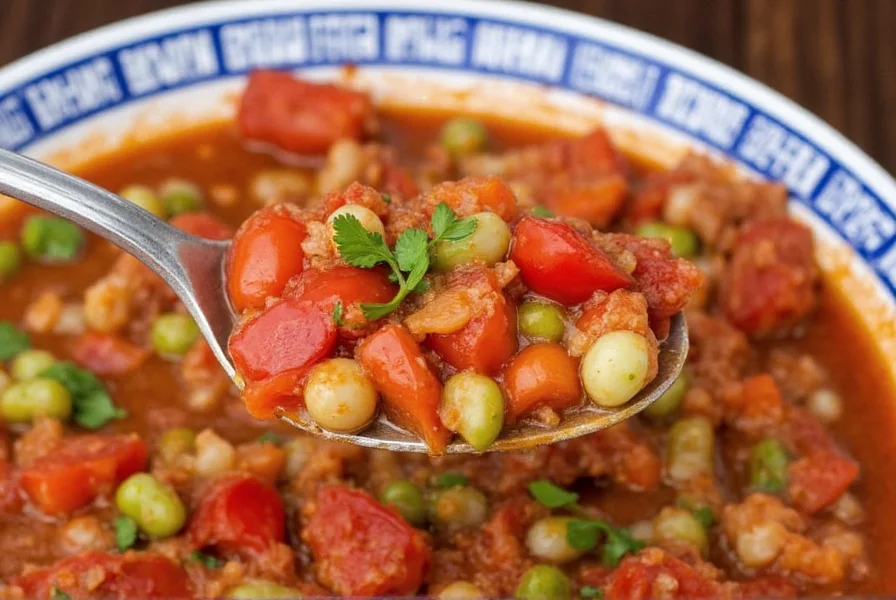
What is Recaito?
Recaito, which literally means "little reca" (reca being the local name for culantro in Puerto Rico), is a Puerto Rican specialty. It’s a raw, green herb-based paste made without tomatoes, designed to add a bright, fresh flavor to dishes. Unlike sofrito, which is often cooked first to release flavors, recaito is typically added at the end of cooking to preserve its freshness.
Key Ingredients:
- Culantro (or cilantro)
- Onion
- Garlic
- Aji dulce or green bell pepper
Recaito omits cooked or roasted elements, focusing purely on fresh ingredients. It’s essential for dishes where a clean, herbal note is desired without tomato’s acidity.
Popular Dishes Featuring Recaito:
- Pasteles (Puerto Rican plantain dumplings)
- Mofongo with shrimp
- Seafood stews
- Vegan bean dishes
- Avocado-based salads

Head-to-Head Comparison: Sofrito vs Recaito
Let’s break down the differences in ingredients, flavor profiles, and usage so you know exactly which one to grab when planning your next meal.
| Feature | Sofrito | Recaito |
|---|---|---|
| Origin | Spain, with regional variations across Latin America | Puerto Rico |
| Base Ingredients | Onion, garlic, culantro/cilantro, aji dulce, optional tomato | Onion, garlic, culantro/cilantro, aji dulce |
| Tomato Content | Often includes tomatoes (varies by region) | Strictly tomato-free |
| Texture | Smooth paste, sometimes chunky | Fresher, more liquid-like consistency |
| Flavor Profile | Richer, deeper, slightly sweet if tomatoes are included | Bright, herbal, more vegetal |
| Preparation Method | Often cooked first in oil | Used raw or lightly heated |
| Best Dishes | Meat dishes, stews, rice, soups, Spanish paella | Vegetarian dishes, seafood, pasteles, avocado-based salads |
| When to Add | At the beginning of cooking to build flavor base | At the end of cooking to preserve freshness |
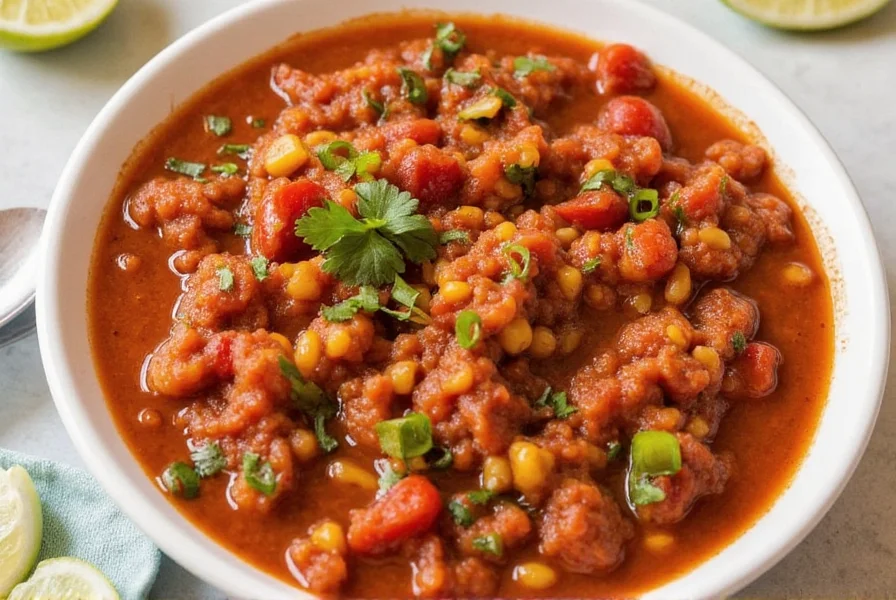
Cooking Tips for Using Sofrito and Recaito
Knowing how and when to use each base can make or break your dish. Here are some pro tips to get the most out of these flavor bombs:
- Use sofrito for heartier dishes: Its robust flavor holds up well in long-cooked meals like stews or meat-based dishes. For Spanish paella, sauté sofrito with saffron for authentic depth.
- Add recaito at the end: Since it’s raw, adding it too early can cause it to lose its freshness. Stir it in during the last 5 minutes of cooking for maximum aroma, especially in seafood dishes.
- Don’t skimp on quality: If making homemade versions, use fresh herbs and ripe peppers. Stale ingredients can ruin the base flavor. For authentic recaito, prioritize culantro over cilantro for stronger flavor.
- Store them properly: Both can be frozen in ice cube trays for easy portion control. Wrap tightly in plastic or vacuum seal for longer shelf life. Sofrito lasts 6 months frozen, while recaito is best used within 3 months due to its raw herb composition.
- Customize your mix: Add a kick with habanero or go mild with extra garlic. Make it your own! For vegan dishes, try adding roasted bell peppers to recaito for extra depth.
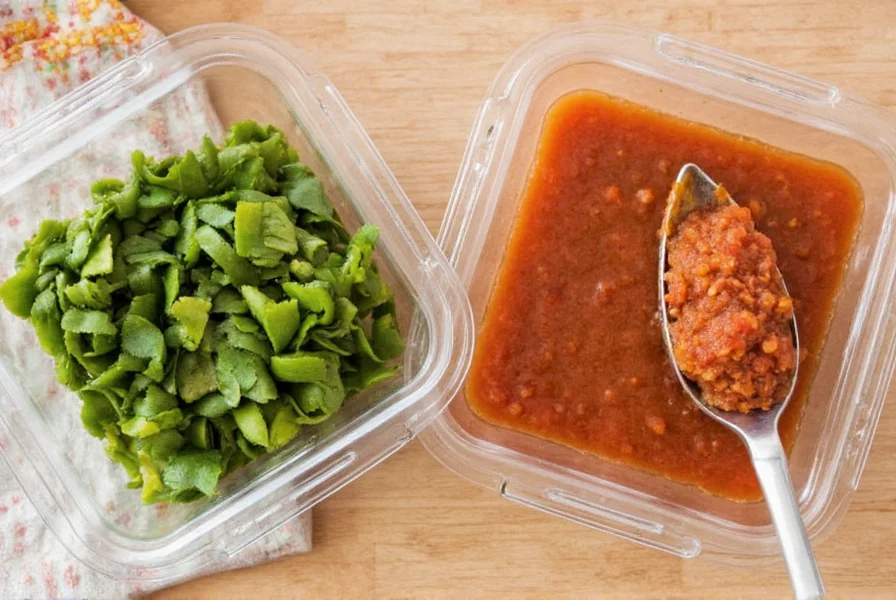
Buying Guide: Choosing Between Sofrito and Recaito
While making your own is ideal, store-bought options can save time. Here’s a guide to choosing the right product for your needs:
| Product Name | Type | Key Features | Best For | Price Range |
|---|---|---|---|---|
| Goya Sofrito | Sofrito | Tomato-based, ready-to-use, shelf-stable | Quick rice dishes, stews | $5–$8 |
| Tia Sofrito | Sofrito | Green Puerto Rican style, no added tomato | Authentic Latin dishes | $6–$9 |
| Patel Brothers Culantro Paste | Recaito alternative | Strong culantro flavor, organic | Vegan recipes, pasteles | $4–$7 |
| Amigos Sazon | Flavor enhancer | Contains annatto and dehydrated sofrito | Seasoning blends, marinades | $3–$5 |
| Homemade Freeze-Dried Packets | Both | Natural, preservative-free, customizable | Long-term storage, camping | $10–$15 |
Factors to Consider When Buying:
- Region of Origin: Choose a brand that reflects the regional variation you need (Spanish, Cuban, Puerto Rican). For authentic Puerto Rican dishes, select tomato-free options.
- Preservatives: Look for natural options without artificial additives. Check ingredient lists for "natural flavors" vs. "artificial preservatives".
- Shelf Life: Refrigerated or frozen versions offer fresher flavor, while canned ones last longer. For recaito, refrigerated is best to maintain freshness.
- Flavor Intensity: Some brands are spicier or more concentrated than others. For example, Tia Sofrito has a milder flavor than Goya for balanced dishes.
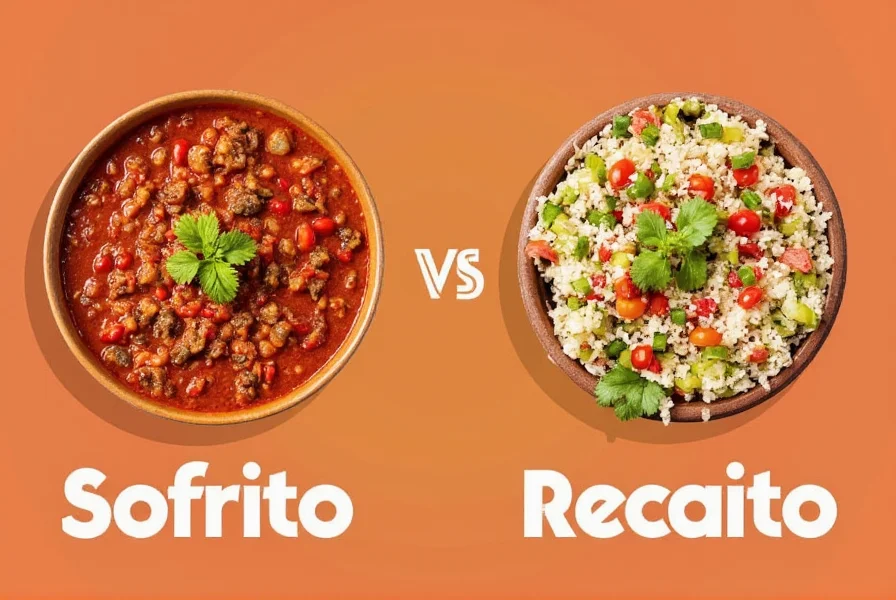
Frequently Asked Questions
What’s the main difference between sofrito and recaito?
The primary difference is tomatoes and preparation. Sofrito typically includes tomatoes and is cooked to develop deep, rich flavors, while recaito is strictly tomato-free and used raw to preserve fresh, herbal notes. This makes sofrito ideal for hearty dishes like stews, and recaito perfect for seafood or vegetarian recipes where brightness is key.
Can I substitute recaito for sofrito in recipes?
Yes, but with adjustments. For meat-based dishes requiring depth, add 1-2 tablespoons of tomato paste when using recaito to mimic sofrito’s richness. For seafood or vegetarian dishes, recaito works perfectly as is. Never substitute dried ingredients—freshness is critical for both.
Why don’t Puerto Rican sofritos contain tomatoes?
Puerto Rican sofrito evolved separately from Spanish versions, prioritizing fresh local ingredients like culantro and ají dulce peppers. The tomato-free version creates a cleaner base that complements island ingredients like plantains and seafood without competing acidity. This variation is documented in authoritative sources like "The Puerto Rican Kitchen" by Maricel Presilla.
How should I store homemade sofrito or recaito?
Freeze both in ice cube trays for portion control, then transfer to airtight containers. Properly frozen, sofrito lasts 6 months, while recaito is best used within 3 months due to its raw herb composition. Refrigerate fresh versions for up to 1 week—recaito loses vibrancy faster than sofrito.
Which is more traditional in Puerto Rican cooking?
Both have distinct roles. Puerto Rican sofrito (tomato-free version) is essential for classics like arroz con gandules, while recaito shines in dishes like pasteles and seafood stews. Neither is "more traditional"—they serve different culinary purposes in the same cuisine, as confirmed by culinary historians in "Flavors of Puerto Rico" by Lourdes Castro.
Can I use cilantro instead of culantro?
Yes, but note culantro has a stronger, more pungent flavor. Use 1.5x the amount of cilantro to approximate culantro’s intensity, though the flavor profile will be slightly different. Never substitute dried cilantro—it lacks the necessary brightness. For authentic results, fresh culantro is recommended.
What dishes absolutely require sofrito vs recaito?
Sofrito is essential for Spanish paella, Cuban ropa vieja, and Puerto Rican pernil—dishes needing deep, rich flavors from cooked tomatoes. Recaito is non-negotiable for pasteles, seafood stews, and vegan dishes where fresh, herbal notes are critical. Substituting in these cases will significantly alter authenticity.
Conclusion
Sofrito and recaito may both serve as foundational flavor builders, but they cater to different palates and purposes. Whether you’re simmering a hearty stew or preparing delicate seafood, choosing the right base can transform your meal from ordinary to extraordinary.
Next time you’re at the store or prepping your meal prep, ask yourself: do I want boldness and depth (sofrito), or brightness and freshness (recaito)? Now that you know the difference, you’ll never go back to guessing.
So fire up the pan, swirl in some oil, and let your chosen base bring your kitchen to life—one fragrant spoonful at a time.

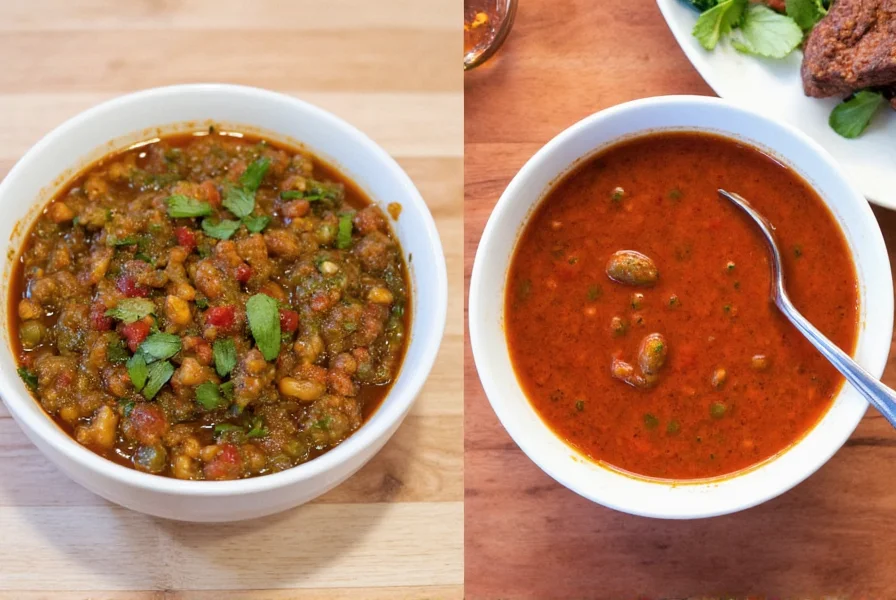









 浙公网安备
33010002000092号
浙公网安备
33010002000092号 浙B2-20120091-4
浙B2-20120091-4